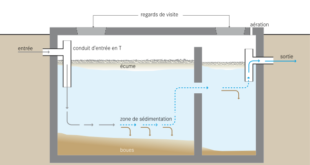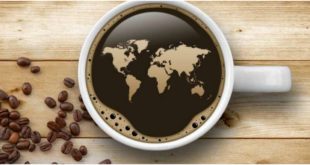Did you know that there is a risk when buying bottled water with a plastic pack? Maybe no one told about this before, but we think that it is good to know. On every bottle should be indicated precisely, what kind of plastic it’s made out. This information is very important for everyone of us. Every kind of plastic contains chemicals which can be harmful for the humans.
We listen everyday news that huge amounts of plastic on the planet Earth are burying the habitats of many living beings. There is a constant awareness of how much nature is polluted with plastic. It also takes hundreds of years to decompose. Because of that there are few places where you can read how much damage plastic actually leaves on the human body. It is about the compounds from which various types of plastics are made. Then when used, many toxic compounds and chemical substances are released. In the following lines, you can find the results of world research to see how harmful certain plastic packaging is and what kind of health problems it can cause.
Things you should know before bying bottled water
All types of the plastic in which the water can be bottled:
Usually here is the place where you can find the mark

Here you can see what they mean:
#1 PET or PETE
– stands for single-use bottles. These bottles can possibly release heavy metals and chemicals that affect the hormonal balance.
“PET is one of the most commonly used plastics in consumer products. It is used in most water and pop bottles, and some packaging. It is intended usually for single use applications. Repeated use increases the risk of leaching and bacterial growth. PET plastic is difficult to decontaminate. Proper cleaning requires harmful chemicals. Polyethylene terephthalates may leach carcinogens.”
#2 HDP or HDPE
– plastic that practically releases no chemicals. Experts recommend choosing these bottles, when buying bottled water, because it is probably the healthiest water you can find on the market.
“HDPE plastic is the stiff plastic used to make milk jugs, detergent and oil bottles, toys, etcc.. HDPE is the most commonly recycled plastic and is considered one of the safest forms. It is a relatively simple and cost-effective process to recycle HDPE plastic for secondary use.”
#3 PVC or 3V
– releases 2 toxic chemicals that affect the hormones in your body.
“PVC is a soft, flexible plastic used to make clear plastic food wrapping, cooking oil bottles. It can also be used for teething rings, children’s and pets’ toys, and blister packaging for myriad consumer products. Also is commonly used as the sheathing material for computer cables, and plastic parts for plumbing. PVC is relatively impervious to sunlight and weather. As a result is used to make window frames, garden hoses, arbors, raised beds and trellises.”
#4 LDPE
– this plastic cannot be used in the production of bottles, but plastic bags, even though it does not release any chemicals into the water.
“LDPE is often found in shrink wraps, dry cleaner garment bags, squeezable bottles, and the type of plastic bags used to package bread. The plastic grocery bags used in most stores today are made using LDPE plastic. Some clothing and furniture also uses this type of plastic.”
#5 PP
– another white colored or semi transparent plastic, used as a packing for syrups and yoghurt cups.
“Polypropylene plastic is tough and lightweight, and has excellent heat-resistance qualities. It serves as a barrier against moisture, grease and chemicals. When you try to open the thin plastic liner in a cereal box, it is polypropylene. This keeps your cereal dry and fresh. PP is also commonly used for disposable diapers, pails, plastic bottle tops, margarine and yogurt containers, potato chip bags, straws, packing tape and rope.”
#6 PS
– releases some carcinogenic substances and it is commonly used in the production of coffee cups and fast food casings.
“Polystyrene is an inexpensive, lightweight and easily-formed plastic with a wide variety of uses. It is most often used to make disposable styrofoam drinking cups, take-out food containers, egg cartons, plastic picnic cutlery, etc.. Polystyrene is also widely used to make rigid foam insulation and underlay sheeting for laminate flooring used in home construction.”
#7 PC or non-labeled plastic
– the most dangerous plastic in the food production which releases BPA chemicals and it is often used in the production of sports water bottles and food containers.
This category was designed as a catch-all for polycarbonate (PC) and “other” plastics, so reuse and recycling protocols are not standardized within this category. Of primary concern with these plastics, however, is the potential for chemical leaching into food or drink products packaged in polycarbonate containers made using BPA (Bisphenol A). BPA is a xenoestrogen, a known endocrine disruptor.
source healthy-holistic-living.com
 World inside pictures Collect and share the best ideas that make our life easier
World inside pictures Collect and share the best ideas that make our life easier









